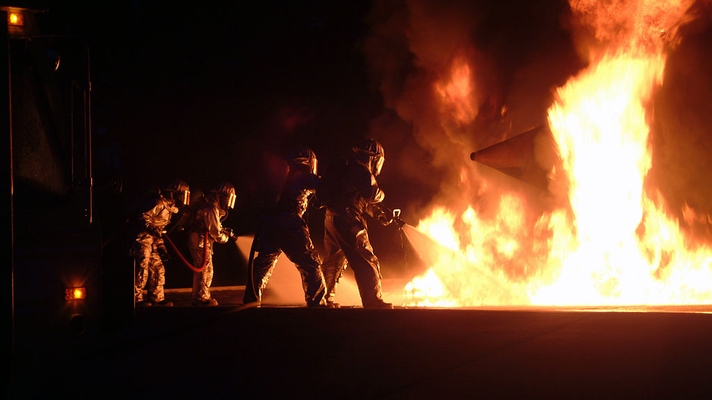Be aware of the fire risk of scrap metal. The Nautical Institute gives this warning in its latest Mars Report, in which scrap metal ignited causing significant damage to the barge transporting it.
The Nautical Institute gathers reports of maritime accidents and near-misses. It then publishes these so-called Mars Reports (anonymously) to prevent other accidents from happening. A summary of this incident:

A tug was towing a scrap metal barge in coastal waters in easy wind and wave conditions. The scrap metal was “shredder feed”, which is a lower grade than heavy melting steel.
Shredder feed consists of a variety of different metal scraps, including end-of-life vehicles that have been crushed (but with free-flowing liquids – gasoline, oil, paint, anti-freeze, lubricants – removed), household appliances, and various other ferrous metal pieces greater than one-quarter inch in thickness.
Early one morning a crew member on watch saw smoke and a red glow emanating from the pile of scrap metal on the barge being towed 200 metres astern. Soon, flames were seen coming from the same area of the barge. The alarm was raised. The fire on the barge was quickly getting larger, and the tow wire was shortened to about 100 metres to better control the barge.
Soon, Coast Guard and local authorities arrived on scene and began fighting the fire. At this point, the fire on the barge had grown exponentially. The barge was towed into shallower water and beached.
Firefighting efforts continued for the next 24 hours before the fire was finally extinguished. No pollution or injuries were reported. Damage to the barge was extensive and estimated at USD 7 million.
Also read: Scrap metal causes fire while being loaded on board ship
Investigation findings
The NTSB determined that the probable cause of the fire was the ignition of a combustible material by an undetermined source, such as sparking from shifting metallic cargo, self-heating of metallic or nonmetallic cargo, improperly prepared vehicles and appliances, or damaged lithium-ion batteries.
The International Maritime Solid Bulk Cargoes Code (IMSBC Code) lists scrap metal as a “Group C” cargo, which is unlikely to liquefy, does not possess chemical hazards, is noncombustible, and has a low fire risk.
Also read: Ship fires not decreasing and still a major cause of total loss
Advice from The Nautical Institute
- Scrap metal seems innocuous and is listed as noncombustible in the IMSBC Code, but is nonetheless a fire risk.
- Scrap metal fires tend to be hard to extinguish and burn hot and long, often causing major damage.
Risk reduction measures for this type of cargo could include:
- Checking the temperature of the cargo regularly to ensure the load is not self-heating. If the temperature is higher than 55°C, the cargo should not be loaded. If, during the voyage, the temperature rises to 80°C, this is a potential fire risk and the vessel should immediately proceed to the nearest port.
- Appointing a qualified cargo surveying company to assist the vessel’s master before and during loading.
Also read: Cargo fire takes ten days to extinguish
Mars Reports
This accident was covered in the Mars Reports, originally published as Mars 202345, that are part of Report Number 372. A selection of the Mars Reports are also published in the SWZ|Maritime magazine. The Nautical Institute compiles these reports to help prevent maritime accidents. That is why they are also published (in full) on SWZ|Maritime’s website.
More reports are needed to keep the scheme interesting and informative. All reports are read only by the Mars coordinator and are treated in the strictest confidence. To submit a report, please use the Mars report form.








